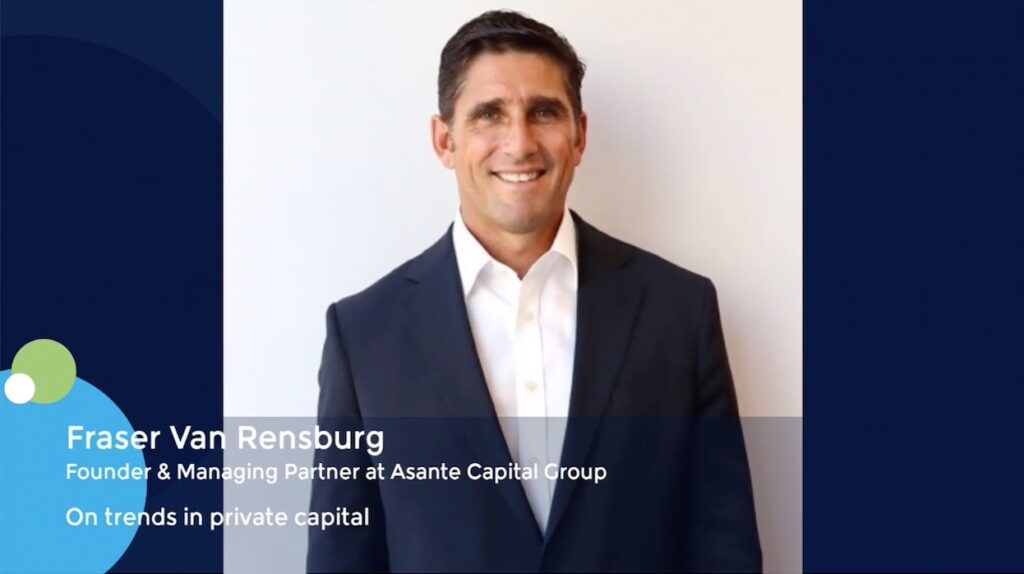Late-stage crossover opportunities gain traction as Trump tariffs hit IPO pipeline
As volatility, stemming from the Trump administration imposition of global tariffs, continues to jolt the public markets, late-stage private rounds are becoming an increasingly attractive path for companies and investors looking to sidestep macro uncertainty.
“While today’s market environment is marked by volatility and a degree of uncertainty, we’re seeing compelling opportunities emerge across the private markets,” said Natalie Hwang, a founding managing partner at investment and advisory firm Apeira Capital.
“IPO timelines have stretched for some companies, contributing to a rise in private rounds and secondary market activity,” she added. “Over the past 18 months, we’ve seen a marked increase in private tender offers, highlighting both the appetite for liquidity and continued interest in high-quality businesses.”
The renewed emphasis on private raises is not just a tariff-driven phenomenon. The IPO pipeline was already facing structural issues before last week’s chaos, with CoreWeave’s tricky road to the public markets showing that investors have become highly sensitized to IPO risks, even for the hottest sectors.
“The IPO market has become a systematic challenge. It hasn’t delivered much alpha, which means people aren’t making money, and that means you’re going to scrutinize each one even more and demand a greater discount,” said Moelis capital markets advisor Steven Halperin.
He added that the IPO class of 2025 is down year-to-date, and has been only marginally better than the S&P.
That scrutiny is driving companies to stay private longer, but it is also creating conditions for a valuation reset that many had long resisted, making deals potentially easier to conduct.
“Many companies haven’t raised money in a couple of years, and valuations have come down. That often means accepting a down round. But four years on from the 2021 peak, companies are becoming more open to that reality,” an ECM banker said. “They know they’re not going public in 2026 at 2021-level valuations. They are better off taking the hit and doing a down round and reset expectations rather than living off dreams.”
He concurred on issuer openness to late-stage funding, especially as the market reels from the uncertainty sparked by tariffs. His team sees more movement in later-stage private markets as issuers increasingly opt to net incremental capital toward IPOs or another liquidity event while listings remain on the backburners. These are often weighed against the expectations of investors from previous valuation rounds. “Everyone is keen on a successful outcome,” he said.
The types of transactions being discussed are evolving. While traditional crossover rounds remain prevalent, bankers are also seeing a rise in minority stake sales to private equity firms, as well as the growing phenomenon of private IPOs. These involve a minority capital raise from select institutional investors. Unlike a traditional IPO, it stays private, avoids broad syndication, and occurs years before any listing. It is distinct from continuation funds or pre-IPO placements and brings in multiple new investors for liquidity and long-term growth. This structure serves as a bridge to a future public exit.
Hellman & Friedman’s raise for Hub International, which could exceed USD 1bn, is being described as a private IPO.
This news service previously reported that global insurance brokerage Acrisure had begun preparations for a potential initial public offering but is working on a preparatory round first. The company has reportedly engaged with investors as it looks to line up a major new tranche of preference shares, with an enterprise value target of over USD 30bn.
Secondary share sales are also booming. “There continues to be a trend on the secondary side,” a crossover investor said.
A key driver is that many companies raised significant capital but chose not to go public in 2021. Now, employees are facing longer timelines to realize benefits from an IPO or exit, and early-stage VCs are also seeking liquidity. “As a result, companies are cleaning up their cap tables and stock options ahead of a potential IPO, as well as an onerous tax bill. They are transitioning some of these shares to long-only and public market investors,” he said.
Rokt, a New York-based e-commerce technology firm, is the latest example of an IPO-bound company conducting an ongoing secondary share sale at a valuation of USD 3.5bn. Investors such as Tiger Global, Barrenjoey, SecondQuarter Ventures, and Square Peg Capital have agreed to purchase shares worth USD 335m from incumbent investors. Certain board members, including Terry Bowen, John Ho, and Karen Katz, are among those buying shares.
Stronghold investments
Investors are fielding meetings on a wide variety of sectors, even though they signal specific interest for those that can benefit from the current global economic trajectory or administration priorities.
“We’re really focused on identifying companies with strong cash flow profiles, defensible business models, and long-term growth potential,” Apeira’s Hwang said. “When signal fidelity runs low, fundamentals matter more than ever.”
Defense tech has been especially resilient. US-based defense-tech startup Anduril is reportedly seeking to raise a fresh round of up to USD 2.5bn. The company has already inked a term sheet for raising the capital at a USD 28bn valuation. This would double the startup’s valuation from last August. US businessman Peter Thiel-owned Founders Fund will lead Anduril’s latest financing with a USD 1bn commitment.
Shield AI, the deep-tech company building state-of-the-art autonomy software products and defense aircraft, announced this week that it has completed a USD 240m F-1 strategic funding round, raising the company’s valuation to USD 5.3bn.
The crypto sector is also reawakening, at least in the private markets. With the regulatory tide shifting and adoption broadening, firms like Kraken are exploring raises as a prelude to potential listings.
“Investors are smarter about how they approach crypto now,” said Moelis’ Halperin. “They’re not going to paint everything with the same brush. People want to look at exchanges, issuers, and infrastructure, but selectively.”
Overall, companies and investors are increasing the pace of dialogue, and the parameters of the discussions are allowing for more flexibility. That flexibility is becoming essential as the lines blur between private and public capital formation.
“Generally, companies are looking to clean up their preferred structures and avoid putting complicated capital stacks in place before an IPO,” Moelis’ Halperin said. “We’re increasingly seeing lightly structured, quasi-equity options as a focus in discussions.”
In a market where predictability is scarce, the ability to adapt is fast becoming a defining trait of late-stage capital strategy.












